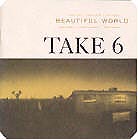|
|
|
|
|
|
|
|
|
|
|
|
|
|
|
|
|
|
|
|
|
|
|
|
|
|
|
|
 |
|
As preamp
As usual, I kicked off the hunt for sonic attributes with a minimalist track - "Bei Dir War Es Immer Schön" [Django Reinhardt NY Festival - Live at Birdland, Division One/Atlantic 83498-2]. It's a dreamy Gipsy Swing ballad with Dutch wunderkind and Django reincarnation Jimmy Rosenberg on lead guitar, Frank Vignola on rhythm guitar and Jon Burr on upright bass. In fact, the entire album is one smokin' session - a condensation of four days of rollickin' impromtpu jamming in the Hot Club vein, with fiddle sensation Regina Carter, Bireli Lagrene, Romanian Jazz violinist Florin Niculescu, pianist Pete Malinveri and the festival honoree's son Babik Reinhardt making short guest appearances.
|
|
|
|
The PRe1 exhibited a mite more air and slightly longer decay trails. That added fullness for a somewhat "bigger" and, surprisingly, also sweeter sound. MOH's only minor shortcoming -- if that's what it even should be called -- was a certain dryness. It shaved off that last bit of ambient reverb, to cut a note's eternity-in-a-grain-of-sand life span just a hair short after initial attack.
|
|
|
|
|
Another way of describing MOH's effect is one of crisp focus -- just the facts, ma'm -- whereas the PRe1 opened the doors for some added poetry of spaciousness. This made the singing quality of Jimmy's playing even more overt. Noticeable, this, but in the overall scheme one of those incremental refinements that make less involved listeners wonder whether audiophiles don't desperately need to get a life.
|
|
|
|
 |
|
|
|
Female voice, still in a minimalist setting, was next: "At The Top Of The Cerro De Palomares" on My Songs And A Poem [RealWorld 7243 8 114325 2 0] by Estrella Morente, daughter of famous Flamenco cantaor Enrique Morente and her debut solo album, partially recorded in the legendary Sacramonte Gipsy caves of Granada and featuring various guitar players from the Habichuela and Carmona clans.
The PRe1 again was slightly more extended on top to farther resolve the metallic tinge in Estrella's pipes. The guitars and synth drums popped with more color, their harmonic content a bit more fleshed out. But outside of cranking up color temperature by a notch or two, the PRe1 had little advantage over MOH, certainly not in soundstage size, image placement or impact of Antonio's Roland Handsonic stomps.
|
|
|
|
 |
|
|
|
Considering the price discrepancy between both units, a most excellent showing for the MOH. In fact, absolutely nothing to sneeze at. I was curious now how it'd hold up on more complex material. I reached for the new Take 6 outing Beautiful World [Warner 9 48003-2] with its tight vocalizing and -- perfectly named Pork Pie productions' -- get-down slam. It's an altogether blacker-than-black groovin' inner city vibe expertly sewn together by slap-happy bass cat Markus Miller.
|
|
|
|
Check out the slow-but-steady steamrollin' Bill Withers tune "Grandma's Hand". MOH's inherent dryness cracked the drum machine with a harder whip and chiseled into this densely layered track with a sharper edge, edge not frequency-domain induced but the same minor damping function of slightly curtailed decay. To describe this difference in broader strokes, juxtapose fluffiness (reverb) with tautness (no reverb).
Between these two poles, the MOH's overall mien leaned towards the reverb kill switch. Rather than entering the still-lingering reverberant space of the previous note, each new note arrived solo. It made for a certain crispness and timing that especially with this type of material was quite becoming.
|
|
|
|
|
|
|
 |
|
|
|
Without fail, MOH delivered the fascinating layering of voices, their broad left-right expanse, the grip-on-the-shorthairs bass attacks on any subsequent tracks I was seduced into to convey the drive of this harmonizing super group. To call it dry then is just a shade of temperament, not an outright characterization. If I had to assign percentage figures to the amount of difference between either unit, compared to, say the gap between my Avantgarde DUOs and Triangle Ventis 222, I'd call the hornspeakers more than 100% better than the French dynamos. It's a matter of playing different leagues altogether.
That's not true for today's preamps. While MOH trailed the PRe1 by perhaps 10-15% in the sonic department, this shadowing occured in the same overall performance league. What you're not getting is the Bel Canto's remote convenience and more comprehensive connectivity options including balanced i/o ports. The MOH is stripped down dishabille by comparison.
However. Add to this equation MOH's true raison d'être -- headphone drive -- and include its asking price. Depending on your priorities, it's easy to appreciate how the precarious value/performance balance could easily tip in favor of the black box from Bozeman, Montana. For the whole enchilada: Listening to headphones and as preamp in a two-source-or-less speaker system.
In fact, until the review loan expired, I enjoyed just such a setup. I teamed up the nOrh SM6.9s with the nOrh Le Amp monos and the MOH, all driven from my wife's Best Buy Sony CD-changer in her office. In dollar context, this rig was somewhat awkward only in that MOH cost more than the front-end and 100w monoblocks combined and the same as the speakers. But this setup sounded better balanced, and without any of the obvious flaws that many tradeshow monster rigs exhibit by excelling at some isolated attribute to the detriment of overall coherence and balance. That's usually because they're attempting too much - 20Hz bass and full-tilt volumes -- in too little room -- closeup listening seats, sub-optimal setup and component matching.
What MOH attempts is just right - well-balanced upper-echelon solid state preamp performance for a very fair amount of money. Such distinct preamp savvy boded well for its headphone prowess. I grabbed the HD-600 and RS-1 cans and engaged in some late-night shtuppin' - of 1/4" jacks.
|
|
|
|
|
|
|
|
 |
 |
|
|
|
|
|
|
 |
|